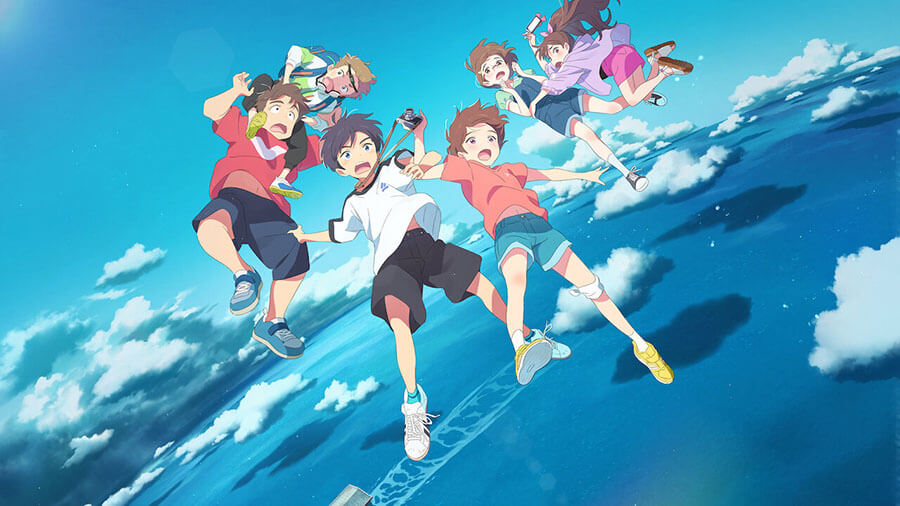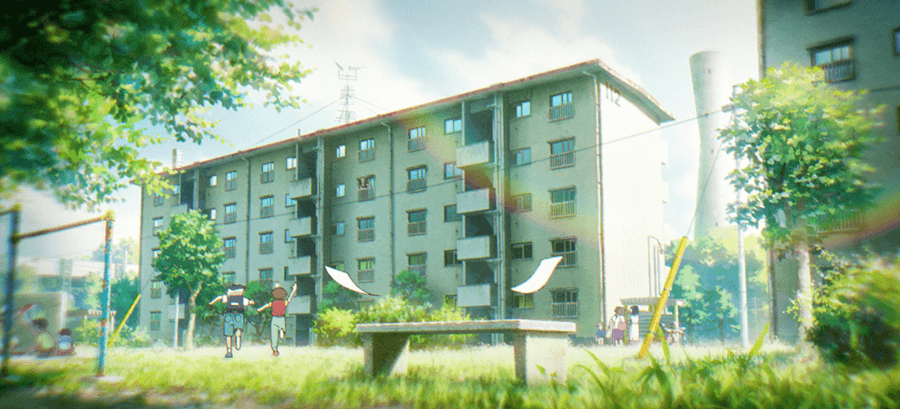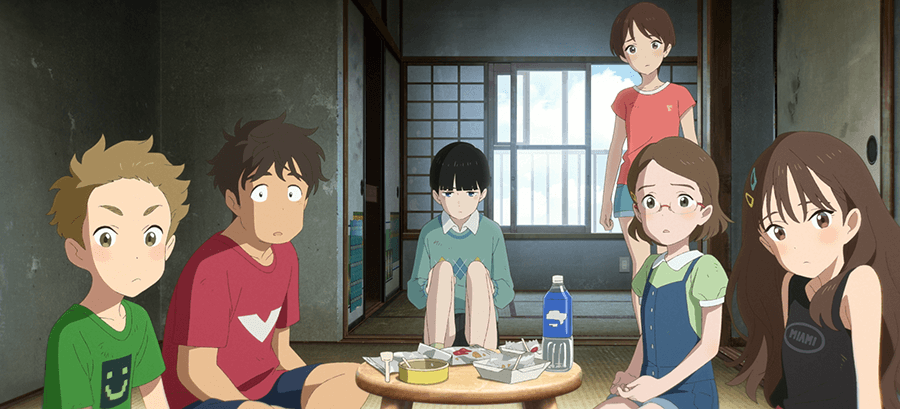Drifting Home: Review
With the release of Drifting Home last Friday, this marks the second fresh entry of Studio Colorido’s multi-year co-production deal with Netflix for three anime feature films. Known for their strong work with Penguin Highway and previous Netflix hit, A Whisker Away, Studio Colorido films have proved to be ever-reliable when it comes to beautiful animation laced with childhood narratives. However, does Drifting Home manage to dive past the mediocrity of its animated precursors or does it sink under pressure?

The film largely centres around Kosuke and Natsume, childhood best friends who eventually drift apart after the death of Kosuke’s grandfather. As summer vacation begins, Kosuke and his classmates, along with Natsume, suddenly end up stranded in the middle of the ocean during their investigation of an old apartment building.
Directed by Hiroyasu Ishida (Penguin Highway), the film’s opening sequence is lovingly nostalgic. With gentle fades as younger Kosuke and Natsume run through their neighbourhood, this simple scene gracefully depicts the passage of time and changes throughout the years. One can also easily see the level of effort and meticulous detail invested in the designs of the featured danchi apartment complexes scattered throughout the film. From the interconnectedness of the rooms to the interior architecture, there is a humbling attention to detail that pays homage to the historical Edo era and post-WW2 origins of these complexes.

With the film’s overarching coming-of-age themes of growing up and letting go, it is only natural that Ishida really taps into this by spotlighting the psychological effects of the Kamonomiya apartments being demolished. This is mostly shown through how Kosuke and Natsume’s fractured relationship greatly hinges on their unresolved flaws and related emotional trauma. While Kosuke is often hot-tempered and unempathetic, Natsume’s dysfunctional family fostered habits of self-doubt and an unhealthy attachment to the dilapidated apartments where Kosuke’s family essentially adopts Natsume. As a result, Drifting Home’s primary setting, the apartment where they both grew up, is the perfect place for both pre-teens to confront their past and reconcile.
During Kosuke and his classmates’ treacherous journey to get back home, Drifting Home mostly succeeds in maintaining a balance between light-hearted moments and surprisingly heart-wrenching action. The film does a good job portraying how a ragtag group of kids would struggle to keep their emotions in check while trying to survive on an apartment block floating through the ocean. However, amongst the film’s numerous arguments, there does come a point where the constant devolving of these incidents into chaotic, screaming fights can be a bit jarring. While these outbursts and oscillations between wisdom and immaturity may be semi-realistic, they ultimately dilute these scenes’ emotional impact as desensitized viewers may struggle to resonate with the arguments that truly matter.

In addition, although Drifting Home deserves credit for its simple, yet visually appealing character designs, not all of the supporting cast is properly developed, and leaves desire for a smaller or more fleshed out cast.
Despite these issues, Drifting Home fantastically excels in visually exploring its premise. Although I do wish that the film could have incorporated more unique survival strategies in a world where buildings float in the ocean like toy boats, the locations that are explored are brilliantly executed. Drifting Home finds its greatest success when sticking to its little moments of bonding and action. Studio Colorido’s masterful combination of hand-drawn and CG graphics is on full display here, particularly with the magical waters and deteriorating buildings that look simultaneously awe-inspiring and sentimental.

This film only loses its momentum when trying to integrate its fantastical elements. I personally enjoy how this isolated ocean world serves as an imaginative representation of kids coming to terms with change and healing from emotional trauma. The use of the floating buildings around the children as physical ways of exploring these old memories is especially smart and insightful. However, the problem only comes when trying to justify and consolidate these elements. Drifting Home struggles to ever properly explain the phenomenon that leads to the stranded adventure and various moments of pure magic, simply relying on pure emotion to fuel its narrative. While one could argue that this adds to its dream-like charm, it doesn’t have as an endearing impact compared to Penguin Highway, and may leave viewers feeling confused about the actual symbolic and tangible consequences of the final act.
Compared to its predecessor, A Whisker Away, Drifting Home is much more refined in all aspects. Ishida and his team do an admirable job with crafting such an emotionally-rounded story that tackles personal and relatable themes of regrets and facing goodbyes. Accompanied by a heartfelt soundtrack and fantastic theme song by ZUTOMAYO, the fan-favourite Japanese rock band, Drifting Home is so close to reaching a welcoming destination of original, thought-provoking delight and wonder. However, its weak execution in tying its symbolic messages and fantastical setting together undermine its foundation, leaving it teetering on the edge of being a fantastic entry by Studio Colorido and Hiroyasu Ishida.
Drifting Home is available now to watch on Netflix in the UK.


